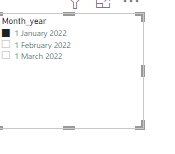- Power BI forums
- Updates
- News & Announcements
- Get Help with Power BI
- Desktop
- Service
- Report Server
- Power Query
- Mobile Apps
- Developer
- DAX Commands and Tips
- Custom Visuals Development Discussion
- Health and Life Sciences
- Power BI Spanish forums
- Translated Spanish Desktop
- Power Platform Integration - Better Together!
- Power Platform Integrations (Read-only)
- Power Platform and Dynamics 365 Integrations (Read-only)
- Training and Consulting
- Instructor Led Training
- Dashboard in a Day for Women, by Women
- Galleries
- Community Connections & How-To Videos
- COVID-19 Data Stories Gallery
- Themes Gallery
- Data Stories Gallery
- R Script Showcase
- Webinars and Video Gallery
- Quick Measures Gallery
- 2021 MSBizAppsSummit Gallery
- 2020 MSBizAppsSummit Gallery
- 2019 MSBizAppsSummit Gallery
- Events
- Ideas
- Custom Visuals Ideas
- Issues
- Issues
- Events
- Upcoming Events
- Community Blog
- Power BI Community Blog
- Custom Visuals Community Blog
- Community Support
- Community Accounts & Registration
- Using the Community
- Community Feedback
Register now to learn Fabric in free live sessions led by the best Microsoft experts. From Apr 16 to May 9, in English and Spanish.
- Power BI forums
- Forums
- Get Help with Power BI
- Desktop
- Date slicer data showing based on conditions
- Subscribe to RSS Feed
- Mark Topic as New
- Mark Topic as Read
- Float this Topic for Current User
- Bookmark
- Subscribe
- Printer Friendly Page
- Mark as New
- Bookmark
- Subscribe
- Mute
- Subscribe to RSS Feed
- Permalink
- Report Inappropriate Content
Date slicer data showing based on conditions
I have to create a report from a table.
i need to add a date slicer which should be like this.
i can't consider any date column from my table for creating slicer.The thing is if i click on jan 2022
report data should be filter out data based on these condition...and also i can't add 2021 slicer date here,can add only upto march date now .
Solved! Go to Solution.
- Mark as New
- Bookmark
- Subscribe
- Mute
- Subscribe to RSS Feed
- Permalink
- Report Inappropriate Content
Hi, @NISHA_S
Create the following calculated column, then create the slicer
Column =
SWITCH(
TRUE(),
[policy_effective_date]<dt"2022-1-1"&&[policy_expiration_date]>=dt"2020-12-31",FORMAT(dt"2022-1-1","dd-MMMM-yyyy"),
[policy_effective_date]<dt"2022-2-1"&&[policy_expiration_date]>=dt"2021-1-31",FORMAT(dt"2022-2-1","dd-MMMM-yyyy"),
[policy_effective_date]<dt"2022-3-1"&&[policy_expiration_date]>=dt"2021-1-31",FORMAT(dt"2022-3-1","dd-MMMM-yyyy")
)
Result:
If you don't want to create a column in the original table, you can create a filter measure and filter items with a measure equal to 1 in the filter pane.
Please refer to the attachment below for details.
Hope this helps.
Best Regards,
Community Support Team _ Zeon Zheng
If this post helps, then please consider Accept it as the solution to help the other members find it more quickly.
- Mark as New
- Bookmark
- Subscribe
- Mute
- Subscribe to RSS Feed
- Permalink
- Report Inappropriate Content
Hi, @NISHA_S
Create the following calculated column, then create the slicer
Column =
SWITCH(
TRUE(),
[policy_effective_date]<dt"2022-1-1"&&[policy_expiration_date]>=dt"2020-12-31",FORMAT(dt"2022-1-1","dd-MMMM-yyyy"),
[policy_effective_date]<dt"2022-2-1"&&[policy_expiration_date]>=dt"2021-1-31",FORMAT(dt"2022-2-1","dd-MMMM-yyyy"),
[policy_effective_date]<dt"2022-3-1"&&[policy_expiration_date]>=dt"2021-1-31",FORMAT(dt"2022-3-1","dd-MMMM-yyyy")
)
Result:
If you don't want to create a column in the original table, you can create a filter measure and filter items with a measure equal to 1 in the filter pane.
Please refer to the attachment below for details.
Hope this helps.
Best Regards,
Community Support Team _ Zeon Zheng
If this post helps, then please consider Accept it as the solution to help the other members find it more quickly.
- Mark as New
- Bookmark
- Subscribe
- Mute
- Subscribe to RSS Feed
- Permalink
- Report Inappropriate Content
@NISHA_S , You should use a date table with month year, preferably independent date table
if you select Jan 2022
// policy_effective_date < '1/1/2022' AND policy_expiration_date >= '12/31/2020'
measure =
var _max = minx(filter(allselected('Date'), 'Date'[Date])
var _min = eomonth(_max, -13)
return
calculate(sum(Table[Value]), filter(Table, Table[ policy_effective_date] < _max && Table[policy_expiration_date] >= _min ) )
Microsoft Power BI Learning Resources, 2023 !!
Learn Power BI - Full Course with Dec-2022, with Window, Index, Offset, 100+ Topics !!
Did I answer your question? Mark my post as a solution! Appreciate your Kudos !! Proud to be a Super User! !!
- Mark as New
- Bookmark
- Subscribe
- Mute
- Subscribe to RSS Feed
- Permalink
- Report Inappropriate Content
can u please tell about what is this Table[Value] means? am not using any value named column here
Helpful resources

Microsoft Fabric Learn Together
Covering the world! 9:00-10:30 AM Sydney, 4:00-5:30 PM CET (Paris/Berlin), 7:00-8:30 PM Mexico City

Power BI Monthly Update - April 2024
Check out the April 2024 Power BI update to learn about new features.

| User | Count |
|---|---|
| 97 | |
| 97 | |
| 81 | |
| 77 | |
| 66 |
| User | Count |
|---|---|
| 126 | |
| 105 | |
| 103 | |
| 81 | |
| 72 |


